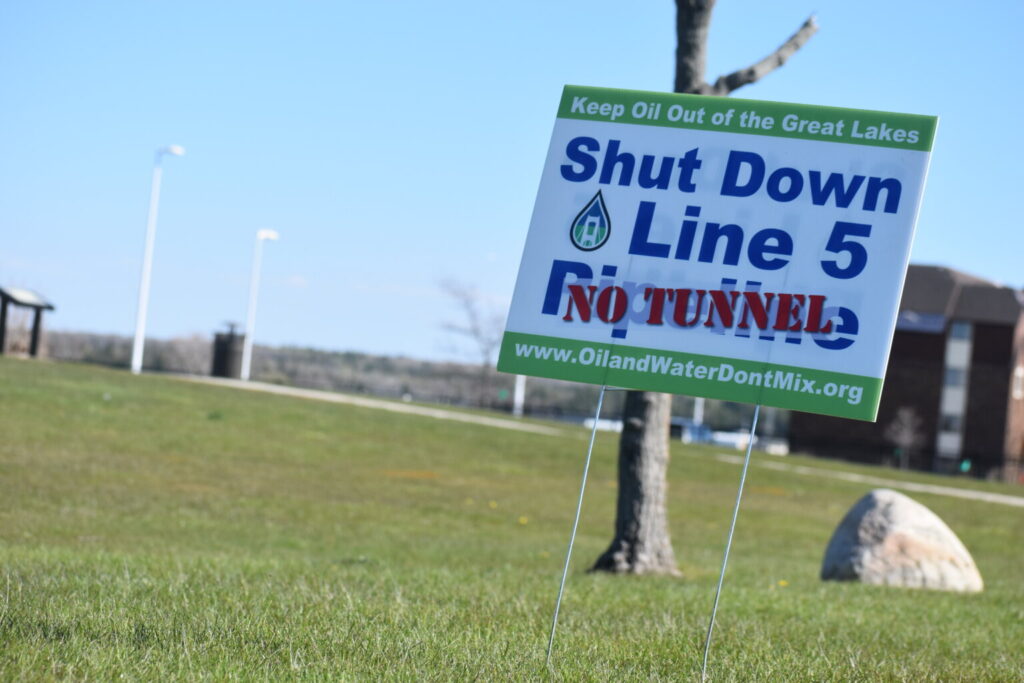A sign protesting Enbridge Line 5 in Michigan. (Laina G. Stebbins | Michigan Advance)
The Wisconsin Department of Natural Resources on Thursday released a final environmental impact statement on Enbridge Energy’s plan to relocate its controversial Line 5 oil pipeline out of the Bad River Reservation in northern Wisconsin.
The nearly 900-page document is another step toward the company receiving the necessary permits from the DNR to move the pipeline, which has for years drawn legal challenges and protests for its potential detrimental effect on the environment.
In 2019, the Bad River Band of Lake Superior Chippewa filed a federal lawsuit to force the 70-year-old pipeline’s removal from tribal land. In 2023, a federal judge ordered Enbridge to remove the pipeline from tribal land within three years. While the lawsuit has been pending, the company has applied for permits to move the pipeline, rerouting it around the reservation.
The company is required to receive approvals and permits from local, tribal, state and federal governments. Under state law, the company must obtain permits for the proposed new pipeline’s effect on stormwater, wetlands, groundwater use, emissions, construction and other potential environmental effects.
After the release of the report, environmental legal advocates said they believe the agency has not given the public enough opportunities for input and promised legal action if they find that the agency has failed to fulfill its requirements under the Wisconsin Environmental Policy Act.
“Regardless of whether the final EIS is accurate and complete, we believe the DNR has failed to comply with the Wisconsin Environmental Policy Act (WEPA),” Midwest Environmental Advocates Executive Director Tony Wilkin Gibart said in a statement. “WEPA requires the DNR to adequately inform members of the public about the potential impacts of the proposed project so they can meaningfully participate in the permitting process. Yet the agency has not held a single hearing or public comment period on Enbridge’s application for wetlands and waterway permits since 2020 — well before the public had the benefit of even a draft EIS.”
“Given these concerns, as well as the significant risks associated with pipeline construction and operation, MEA will continue to subject the final EIS to the highest possible legal scrutiny,” he continued. “If we find that it falls short of what the law requires, we are prepared to take legal action to stop this dangerous and destructive pipeline project.”
GET THE MORNING HEADLINES DELIVERED TO YOUR INBOX

